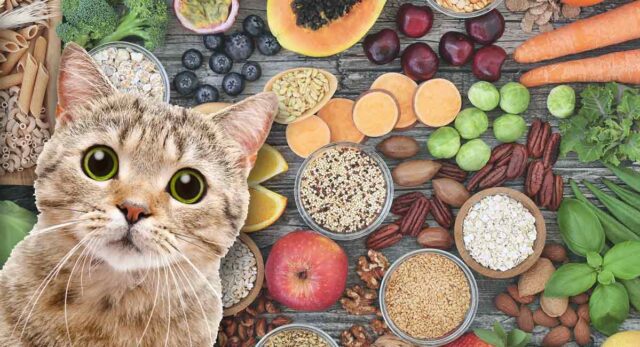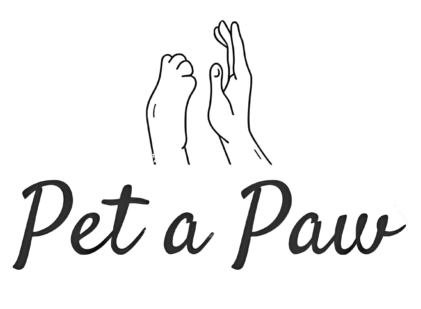
Healthy Homemade cat food
Cats are more than just pets; they are beloved members of our families. As responsible pet owners, we want to provide the finest an Best healthy homemade cat food care possible, and diet is essential to their general health and well-being. While commercial cat feeds are convenient, many pet owners are turning to homemade alternatives to ensure their feline friends get the nourishment they need.
Understanding the Feline Diet:
Cats are obligate carnivores, which means they need to eat a diet high in animal protein. Unlike omnivores like dogs and humans, cats have specific nutritional requirements that must be met to support their unique physiology and metabolism. Taurine, arachidonic acid, and vitamin A are essential nutrients for feline health that are sometimes lacking in commercial cat foods. Homemade cat food can help in this situation.
Safety First: Guidelines for Homemade Cat Food:
Before beginning the process of making homemade cat food, consult with a veterinarian to ensure that your cat’s dietary requirements are met. When making homemade cat food, safety should always be the number one priority. To reduce the risk of contamination, use fresh, high-quality ingredients and follow proper food handling and hygiene practices. Be aware of any potential nutrient deficiencies or imbalances, and consult your veterinarian before incorporating supplements. Crafting Homemade Cat Food: Recipes and Ingredients:
Creating the Best Healthy Homemade cat food cat food can be a rewarding experience for both you and your furry companion. Here are a few recipes to get you started:
1. Raw Cat Food Recipe:
– 2 lbs of raw chicken thighs (bone-in for calcium)
– 1/2 lb of chicken liver
– 1/3 lb of chicken hearts
– 1/2 cup of pureed vegetables (e.g., carrots, peas, spinach)
– 1 tablespoon of fish oil (for omega-3 fatty acids)
Grind the chicken thighs, liver, and hearts together in a food processor. Mix in the pureed vegetables and fish oil. Portion the mixture into meal-sized servings and freeze for future use.
(MUST TAKE CONSULT VET BEFORE GIVING ANY RAW FISH)
2. Cooked Turkey and Rice Recipe:
– 1 lb of cooked ground turkey
– 1 cup of cooked brown rice
– 1/4 cup of cooked peas
– 1/4 cup of cooked carrots, diced
– 1 tablespoon of olive oil
Combine all ingredients in a bowl and mix well. Serve immediately or store in the refrigerator for up to three days.
3. Salmon and Sweet Potato Recipe:
– 1 can of wild-caught salmon, drained
– 1/2 cup of mashed sweet potato
– 1 tablespoon of chopped parsley
– 1 teaspoon of coconut oil
Mix all ingredients together until well combined. Form into small patties or serve as is. Refrigerate any leftovers for up to two days.
4. Chicken and Pumpkin Stew:
– 2 boneless, skinless chicken breasts, cooked and shredded
– 1 cup of pureed pumpkin
– 1/2 cup of chicken broth
– 1/4 cup of chopped spinach
Combine all ingredients in a saucepan and simmer over low heat for 10-15 minutes, until heated through. Allow to cool before serving.
5. Beef and Green Bean Delight:
– 1 lb of lean ground beef
– 1 cup of cooked green beans, chopped
– 1/4 cup of beef broth
– 1 tablespoon of flaxseed oil
Brown the ground beef in a skillet over medium heat. Drain any excess fat, then add the cooked green beans and beef broth. Cook for an additional 5 minutes, then stir in the flaxseed oil. Let cool before serving.
More recipes at 6 Delicious Homemade Cat Food Recipes (Vet Approved) (Vet Reviewed & Approved) – Cats.com
Transitioning Your Cat to Homemade Food
To avoid digestive upset, transition your cat to homemade food gradually. Begin by incorporating a small amount of homemade food into your cat’s current diet, gradually increasing the proportion over several days. Monitor your cat for signs of intolerance or allergies, such as vomiting, diarrhea, or skin problems, and consult your veterinarian if you have any concerns. Remember that each cat is unique, so adjustments may be required to achieve the ideal balance for your pet.
Making Best healthy homemade cat food is a labor of love that allows you to provide your feline companion with nutritionally balanced, carefully prepared meals. While it may take more time and effort than commercial options, the benefits for your cat’s health and well-being are immeasurable. Consult your veterinarian, try new recipes, and enjoy the satisfaction of feeding your cat nutritious, homemade food.
Are you considering transitioning your cat to homemade food? Share your thoughts and experiences in the comments below! Don’t forget to subscribe to our blog for more tips and insights on pet care. For additional information and resources on crafting homemade cat food, check out the links provided in this article. Your cat’s health and happiness are worth the extra effort!
Certainly! Let’s delve into some detailed explanations regarding the importance of homemade cat food, its benefits, things to avoid, and essential components of a homemade cat food diet:
Why Homemade Cat Food?
Homemade cat food provides several advantages over commercial options:
1. Control Over Ingredients: Making homemade cat food gives you complete control over the quality and source of the ingredients. You can choose fresh, high-quality meats, vegetables, and supplements to give your cat the best nutrition possible.
2. Tailored Nutrition: Each cat is unique, with its own dietary requirements and preferences. Homemade cat food allows you to customize your pet’s diet based on specific health concerns or dietary restrictions, such as food allergies or sensitivities.
3. Minimization of Additives and Fillers: Many commercial cat foods contain additives, preservatives, and fillers that are either unnecessary or potentially harmful to your cat’s health. By making your own cat food, you can eliminate these additives and give your cat a healthier, more natural diet.
Benefits of Homemade Cat Food
1. Improved Digestion: Homemade cat food typically contains fewer fillers and artificial ingredients, making it easier for cats to digest. This can lead to fewer cases of gastrointestinal upset, like vomiting and diarrhea.
2. Healthier Coat and Skin: A diet high in high-quality proteins, essential fatty acids, and vitamins can help your cat’s coat shine and his skin stay healthy. Homemade cat food allows you to include these essential nutrients in your pet’s diet in the appropriate amounts.
3. Enhanced Energy and Vitality: Giving your cat a balanced and nutritious homemade diet can boost her energy and vitality. Cats thrive on protein-rich diets that provide essential nutrients for muscle maintenance, immune function, and overall health.
What to Avoid in Homemade Cat Food
1. Toxic Ingredients: Certain foods that are safe for humans can be toxic to cats, such as onions, garlic, grapes, and raisins. Avoid including these ingredients in homemade cat food recipes.
2. Raw Fish: While small amounts of cooked fish can be beneficial, raw fish may contain harmful bacteria and parasites that can pose health risks to cats. It’s best to avoid raw fish altogether or consult with a veterinarian before incorporating it into your cat’s diet.
3. Unbalanced Diets: Homemade cat food should be nutritionally balanced to meet your cat’s dietary requirements. Avoid feeding your cat an unbalanced diet that lacks essential nutrients like protein, vitamins, and minerals.
Must-Have Components of Homemade Cat Food
1. High-Quality Protein: Cats require a diet rich in animal-based protein to thrive. Include lean meats such as chicken, turkey, beef, or fish as the primary source of protein in homemade cat food recipes.
2. Essential Fatty Acids: Omega-3 and omega-6 fatty acids are necessary for cats’ healthy skin, coat, and immune function. Include essential fatty acid sources like fish oil, flaxseed oil, or sunflower oil in your homemade cat food recipes.
3. Vitamins and Minerals: Ensure that your cat’s homemade diet contains essential vitamins and minerals like vitamin A, E, taurine, calcium, and phosphorus. To meet these requirements, consider taking supplements or eating more nutrient-dense foods like liver, eggs, and leafy greens.
4. Hydration: Cats have a low thirst drive and may not get enough water from their food. Consider adding water or low-sodium broth to homemade cat food recipes to help your cat stay hydrated.
By incorporating these essential ingredients into homemade cat food recipes, while avoiding harmful components and maintaining nutritional balance, you can provide your feline companion with a wholesome and nourishing diet that promotes optimal health and well-being. Additionally, before making any significant changes to your cat’s diet, always check with your veterinarian to ensure that it meets their specific nutritional needs and dietary requirements.


